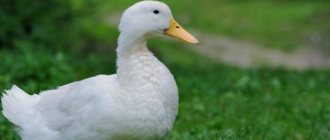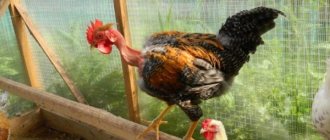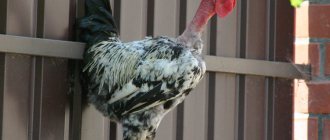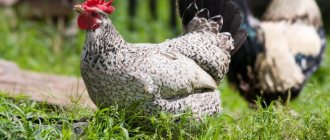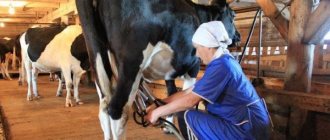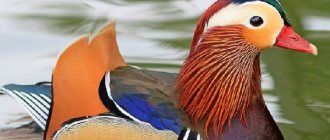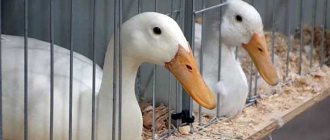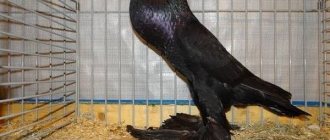Meat Bashkir duck belongs to farm birds. Breeders and consumers appreciated its meat as a source of nutrients and microelements. This is a healthy dietary product. In ancient China, duck meat was credited with aphrodisiac properties. Modern scientists have proven this fact. It's all about the amount of amino acids and vitamins that have a beneficial effect on the human body. This article will tell you more about the Bashkir duck and the features of its content.
General information about the Bashkir breed
The Bashkir duck in its physical characteristics resembles the Peking variety of bird. This is a meat breed with a high level of egg production. The number of eggs laid by one individual is about 120 units during the year. The weight of one egg is from 80 to 90 grams. The average weight of adult drakes is 4 kg, and females - 3-3.5 kg.
Ducks of the Bashkir breed appeared through artificial selection in the early 2000s. Peking ducks became the genetic material for the work. The Bashkir has become one of the most sought after and popular species of poultry. It is of interest to both small farmers and hobbyists, as well as businessmen and poultry breeders.
Reviews
- Antonina: “I have been raising ducks for a long time, so I also have the Bashkir breed. I like these ducks for the reason that they do not require special attention, which is important when you have a large farm. In addition, for example, if you hatch 10 eggs, 9-8 ducks will definitely hatch from them. This indicates high survival rate. Their diet is basically not very different from chickens; I give them feed, grain, waste, and root vegetables.”
- Sergey : “I also brought myself a duck of the Bashkir breed 2 years ago. These amazing animals initially struck me with their beauty. I took black and white breasted ones. In addition, they adapt perfectly to new living conditions. Thanks to a strong immune system, there is no need to worry about illness again. They are also unpretentious in nutrition, you just need to provide them with constant access to water.”
- Milana : “In the summer I always come to my grandmother and help her with the housework. It contains lek, chickens, geese and even a goat. But I still have an honorable mission - to take care of the ducks. I recognized their breed - it is Bashkir. I can’t say that I was very stressed. I cleaned their premises, prepared mash and mixed feed. I fed them 3 times a day, and they also grazed on green grass. Of course, each time we had to choose a different clearing, where there was lush grass. It’s good that we are located right next to the pond, the ducks feel very comfortable there.”
Ducks of the Bashkir breed are fairly well-known birds, which, despite such a long period of existence, continue to be in great demand among farmers. This breed is easy to keep and adapts well to different climatic conditions. It is these qualities that allow even novice poultry farmers to breed ducks. Find out about the Leghorn laying hen breed here.
Description of the breed
Bashkir ducks have a strong and dense build. The chest protrudes forward. Widely spaced paws are relatively large in size and short in length. The neck is short, slightly arched, the top of the head is slightly flattened.
The beak of the Bashkir duck has clearly defined contours and a wide curved shape. The growth on the beak, characteristic of the breed, facilitates convenient capture of food. The bird's wings fit tightly. The keel, like that of other flying birds, is long and developed.
Plumage colors: white and blue, with multi-colored feathers. The shade in both cases is as close as possible to ducks living in their natural environment.
In the direction from the back to the belly, the plumage of birds gradually becomes lighter. Drakes have colors that are brighter and more spectacular than ducks.
The sex of day-old ducklings is determined by the presence of brown feathers. On the 35th day of the bird’s life, the feathers in the area of the neck, head and tail of males acquire a dark bluish tint with a green metallic tint.
Description of external characteristics, existing varieties of ducks
Birds of the Bashkir breed have a massive, strong build. Its distinctive feature is its variegated plumage. There are two main types:
- Representatives of the khaki color are recognized by their wings, where brown and gray colors predominate. Additionally, there are patterns in the form of white spots.
- Black and white birds are distinguished by dark feathers throughout the body. A white area is present in the chest area.
The color of the plumage is uneven. Bright shades predominate on the back. The wings and areas near the paws have a lightened tone. The color of the plumage and pattern are similar to the color of wild ducks. Poultry attracts with its decorativeness.
In addition to the two main species, female Bashkir birds are divided into 3 varieties according to the dominant color:
- The white duck has predominantly white plumage. The bird has a moderate appetite. The female lays about 100 eggs in 6 months.
- The gray duck has a corresponding dominant plumage color. Lays up to 115 eggs in 6 months.
- The blue duck is decorative. The bird outperforms its relatives in egg production. In 6 months, the female lays up to 130 eggs.
The color of the drakes of the Bashkir breed is distinguished by its bright colors. On the 35th day of life, the male’s plumage in the head area, on the upper neck and tail becomes black. The bluish tint adds originality.
Ducks boast a strong build with a forward-convex chest. The second trait confirms the ability to fly well. Birds have sweeping wings, which they press tightly against their body while walking.
Ducks have powerful short legs
However, they walk slowly on the ground, which is important. It seems that the bird is wagging from side to side
The slightly flattened head is located on a small neck. The duck is constantly trying to pull it forward. There is a growth on the orange beak that helps to better capture green food.
Advantages and disadvantages
The characteristics of this breed of birds would be incomplete if we did not mention the distinctive features, advantages and disadvantages of Bashkir ducks.
The negative aspects are more general than local in nature, since they apply not only to ducks bred in Bashkortostan, but also to other breeds. This is an increased appetite, a tendency to cleanliness, and the need for large amounts of clean drinking water.
The advantages of this poultry variety are:
- restrained temperament;
- high rates of egg production (with the exception of khaki ducks);
- Possibility of choosing the type of keeping birds: cage, pen, combined;
- low feed costs;
- dietary poultry meat with a high content of nutrients;
- perseverance when hatching, early age for starting laying;
- ease of breeding and implementation.
Day-old Bashkir ducklings are bought at the market, not just meat and eggs. The reason for this is the ease of care, unpretentiousness of the bird, resistance to diseases and its productivity. In addition, the hatchability rate of young animals is 80%.
Characteristics of the Bashkir duck
The characteristics of Bashkir ducks include both positive and negative traits.
- The bird quickly acclimatizes and gets used to the new living conditions.
- High productive qualities were noted not only when raised in poultry farms, but also when kept in a private backyard.
- Meat yield from 4 kg is 70%. It has a pleasant, delicate taste, juicy, without a specific smell. Weight gain is rapid - young animals are allowed to be slaughtered from the age of 2 months.
Characteristics of the Bashkir duck
Characteristic features of birds
There are no nerve endings on the birds' feet. For this reason, they have the ability to move on any surface without discomfort or pain.
Water does not penetrate into the feathers of this duck breed at all. The plumage, without treatment, will retain this property for several years after the loss or death of the bird.
The drake of the Bashkir breed does not quack. And the quack of ducks does not cause an echo.
The fat of Bashkir ducks contains such valuable components as omega-3 and omega-6 acids. These elements are important for human health, but are rarely found in their natural form.
Consumption of Bashkir is contraindicated for people suffering from allergies.
History of appearance and appearance features
The breed was bred at the end of the 20th century in Bashkortostan, on a breeding ground. The company’s specialists were engaged in intrabreeding crosses of “Peking” ducks in order to improve their economic performance. During the work, mutant individuals with brightly colored plumage began to appear. Further efforts of scientists led to the creation of two varieties of a new breed, capable of competing with the “Peking” in early maturity and productivity, called “Bashkir Colored”, patented and included in the State Register of the Russian Federation in 2001.
A brief description of the Bashkir duck breed is given in the table:
| Parameter | Characteristic |
| Class | Birds |
| View | Domestic duck (Anas platyrhynchos L.) |
| Breed | "Bashkir Colored" |
| Type of use | Meat and egg |
| Feather coloring | Black and white (black-white-breasted variety) or mottled, grayish-brown (khaki variety) |
| Age of puberty | 4-5 months |
| Egg production | Up to 200 pieces per year (maximum 230) |
| Safety of young animals | High (about 99%) |
| Individual weight | At the age of 7 weeks 3-3.4 kg; more adults – up to 4-4.5 kg |
| Feed conversion | 2.75 kg per 1 kg weight gain (up to 7 weeks of age) |
| Sustainability | For cold weather and major diseases – high |
| Year of registration in the State Register of the Russian Federation | 2001 |
| Originators | LLC Plempttice and Federal State Budgetary Institution Federal Scientific Center "All-Russian Scientific Research and Technological Institute of Poultry" RAS |
The bird is quite large, densely built. The body is compact, the chest protrudes strongly forward, the keel is well developed. The wings are of medium length, tightly pressed to the body. The neck is relatively short, arched forward. The head is small, flattened. The beak is concave, wide, with a characteristic growth on top. The paws are strong, thick, short, widely spaced.
Birds have a massive body and small wings tightly fitting to it.
There are two standard colors of “Bashkir” ducks (pictured):
| Variety | Coloring Features |
| "Black white-breasted" | The chest is white, often with black “speckling”. The rest of the plumage is black; adult drakes often have a bluish or greenish “rainbow” tint on the head and wings. The beak and feet are olive-gray or dark gray. Eyes dark brown |
| "Khaki" | The belly and neck are white. The rest of the plumage is grayish-brown with “variegation” of a darker shade. Males have a dark green head color and a white “collar” on the neck, as well as bright blue “mirrors” with a black and white “edge” at the ends of the wings. Ducks often have black and white wing tips. The beak and paws are bright orange. Eyes brown |
The male of this breed is usually larger than the females, much brighter in color, and his forehead is wider and more convex. You can also determine the sex of a grown-up individual by its behavior: unlike ducks, drakes do not quack, but emit a quiet “grunting” sound.
The breed is well adapted to being kept in simple, lightweight housing with the ability to forage in shallow reservoirs
"Bashkirs" are considered relatively "quiet" ducks. They are calm and not prone to aggression. They do not quarrel with other inhabitants of the farmstead, but always stay in a separate flock. They are unpretentious in food and maintenance, resistant to frost, and have excellent immunity to most common “avian” ailments.
Principles of keeping the Bashkir breed
Breeding Bashkir ducks at home requires certain skills. This process does not cause any particular difficulties, since the birds are unpretentious.
You don't need a pond for ducks. A trough with clean water will be enough for bathing and cleaning feathers.
But the area of the poultry house matters. The volume of the room is calculated based on the proportion of 1 meter² per adult. This applies to ducks living in an aviary during a comfortable time of year. Birds kept in the house year-round coexist in an area of 3 meters² per individual. This will allow them, clinging to each other, not to freeze in the cold.
Take care of the lighting of the enclosure for Bashkirs during the cold months. This way you will support the productivity of laying ducks. The optimal daylight time for these birds is about 14 hours.
Provide your pets with proper care. It consists of timely cleaning of the poultry house, sufficient feed and clean water.
Pitfalls, maintenance problems and their solutions
The main problem in raising Bashkir ducks is their omnivorousness and gluttony. Although this is considered one of its advantages, there is a danger here. The fact is that if a duck overeats too much, it will become obese. In this case, its meat will lose its value, because it is valued precisely for its low fat layer.
You need to make sure that the ducks have as much food as they need. If the ducks are given free range in the summer, and she can find food on her own, then you need to reduce her feeding. In case of obesity, not only meat quality deteriorates, but egg production also decreases. Otherwise, there are no problems with keeping Bashkir ducks.
When mass breeding of Bashkir ducks there is one more nuance. The higher the density of birds, especially young animals, the more they get sick and the worse they develop. Therefore, it is not worth keeping all the birds, if there are many, in one room. It is better to resettle them in small groups, and separate walking only if there is such an opportunity. It's not that important anymore.
Features of feeding "Bashkirs"
The Bashkir breed does not require special feed. These birds have a shortened intestine, therefore, the metabolism, compared to chickens, is accelerated by one and a half times. Birds require three meals a day.
The poultry diet includes the following products:
- grain mixtures for poultry;
- hay and other grass;
- thermally processed vegetables: beets, carrots, turnips, potatoes and other root vegetables;
- feed;
- table scraps, unless they are spoiled.
The last point is extremely important.
If the food is expired or fermented, it will cause severe poisoning in the birds. A fatal outcome cannot be ruled out.
When introducing bread into your diet, remember that the Bashkir colored duck, like its relative the white-breasted duck, is prone to rapid weight gain. Therefore, give your pets flour only as a rare treat.
Incubation of eggs of the Bashkir breed
Since Bashkir ducks have a well-developed natural instinct of motherhood, artificial incubation is not required. The optimal calculation for individuals of both sexes for mating is: one male - three females.
Make sure that each female has her own personal place. Hatching eggs can be placed under a good laying hen. It can be calculated by its behavior - if a bird does not get up from its perch for a couple of days in a row, it is suitable for this mission.
Good lighting is necessary both during the incubation period and after the appearance of Bashkir ducklings.
Diseases
Bashkir ducks have stable immunity. If you follow the rules of care and feeding, you don’t have to worry about the health of the birds. Poultry also gets sick.
List of common diagnoses:
- Avitaminosis. The disease is associated with a deficiency of vitamins and minerals. The plumage is thinning, the ducks become lethargic, eat poorly, and do not gain weight.
- Cloacite. Inflammation of the mucous membrane of the cloaca due to a deficiency of vitamins A, E and D, microelements.
- Prolapse of the oviduct. Severe diarrhea is replaced by prolonged constipation, digestion is disrupted.
You should also be wary of infectious diseases in the poultry yard:
- Aspergillosis. Fungal disease. Most infected ducklings die, and the clinical outcome for adults is favorable.
- Bacillary white diarrhea. This is a salmonella infection. Newborn ducklings are more likely to get sick and die 3 days after infection.
- Rhinitis. A runny nose infects the entire school and is quickly transmitted from sick ducks to healthy ones.
- Typhus. A disease of adults; ducklings are extremely rarely affected. Breeders isolate infected birds and slaughter them.
- Viral hepatitis. Ducklings up to 2 weeks of age are prone to the disease. Infection occurs from a sick individual - through feces, food and water.
- Coccidiosis. The disease develops when the rules for keeping ducks are not followed, and is especially dangerous for babies under 2 weeks of age.
Disease Prevention
Despite a strong immune system, it can also fail. To maintain the health of the duck and the size of the school, follow these preventive measures:
- Disinfect the room before moving the ducklings.
- Ensure bedding is dry, clean and fresh.
- Carry out preventive vaccination of ducks according to age.
- Relocate the sick duck in a timely manner, otherwise it will infect the entire school.
- Monitor the freshness of food and drink, introduce new food ingredients according to age.
The appearance of offspring
It is believed that breeding Bashkirs is one of the simplest processes among all varieties of ducks. That is why raising a duckling is quite feasible without the participation of the mother. To do this, it is enough to comply with the requirements for caring for babies.
Newly hatched chicks are given a separate cage, equipped with a blue or red lamp. The optimal temperature for keeping ducklings is 28°-30°. The first feeding is carried out immediately after drying the newborns. It includes a finely boiled egg. Kids are unpretentious in food and eat the same things as adults. The children's menu can be diversified with nutritional yeast, bone meal, and chopped herbs.
In the third week of rearing, the young animals are released for walking. To do this, equip the chicks with an aviary where there are shaded and sunlit areas. Do not mix young animals with adults until they fledge.
Breeding and care
Young animals hatch equally well in an incubator and through natural incubation. Hatchability is 78–80%. Incubation takes 22–23 days. From the moment of hatching, the young are kept indoors with their mother for the first 20 days.
Important! If you don’t have an incubator and a duck ready to hatch eggs, you can place biomaterial under the hen.
In good conditions, the bird begins to lay eggs in February. But, the first biomaterial is usually not fertilized and is not suitable for incubation. It is better to take March and April eggs for incubation. The fertility of ducks lasts for 3 years, then breeding individuals need to be renewed.
To obtain high-quality meat products, it is advisable to keep young animals for 3–4 months and send them for slaughter. The contents can be floor or cellular. The breed is not at all picky about this.
Content Rules
The storage room must be warm. In winter, the air temperature should not fall below +7 °C. The floors must be raised to a height of 20 cm and the walls are strengthened against the penetration of rodents and other animals. For adults per 1 sq. m. the room will require 5 W of energy for additional lighting.
The lights are turned on in the morning and evening or only before bed.
In winter, per 1 sq. m. It is allowed to keep 3-4 animals, in summer - no more than 2. The premises are cleaned every 4 days. Drinkers and feeders are washed regularly using a manganese solution. Nests are installed in the far corner of the room. Each duck will need a separate nest measuring 60x40 cm.
For this breed, you need to arrange a walking area with an artificial or natural pond, which should have high-quality grass cover.
What to feed?
Bashkir ducks eat everything they find. It is better to prevent this and streamline the birds’ diet to avoid their obesity. The bird is distinguished by an accelerated metabolism, so everything eaten is quickly absorbed and goes towards the development of the body.
When fattening for meat, a mandatory component of the diet is balanced feed in granules. The ratio of grain and feed mixtures for adult birds is 0.4:0.5. Boxes with sand and crushed shells must be placed on the territory of the walking yard and poultry house. Adult birds are fed 4 times a day.
Important! The water in the drinking bowls needs to be changed 3 times a day. Ducks love to splash around in drinking bowls, so the liquid quickly becomes dirty. One individual drinks about 2 liters of water per day.
In summer time
The breed's summer diet consists of:
- pasture;
- root vegetables;
- yeast;
- silo;
- wheat bran;
- corn;
- compound feed.
in winter
Basic winter diet:
- corn;
- wheat;
- legumes;
- chalk;
- compound feed;
- grass and meat and bone meal.
Occasionally fish and minced meat are mixed into the food. Add 300 g of minced meat per individual. In the morning and at lunchtime they give wet mash, in the evening they are limited to dry food.
Shedding
The egg-laying period begins in February and ends in June. In regions with cool summers, the period extends until August. The first molt takes place in June-July, the second in August-October. During this period, the bird does not produce eggs.
In females, molting occurs 10–15 days later than in males. In the first molt, the tail and flight feathers of the 1st–2nd order change, in the second, the tail and small feathers change.
Secrets of experienced farmers
To ensure that keeping the Bashkir breed gives maximum results, use the advice of professionals.
Your pets should not be too hot. Especially in dry summers. Birds cannot tolerate heat. Signs of overheating: constantly slightly open beak, lack of appetite, frequent drinking, drooping wings.
A mandatory requirement is dry and clean bedding in the poultry house. She preps quickly because ducks' feet are always wet after bathing.
Avoid drafts when ventilating a room with pets.
Do not overfeed Bashkirs, because they are prone to rapid weight gain.
When mating, large drakes with signs of obesity need only fertilize one or two females and no more.
Advantages and disadvantages
The popularity of the breed is due to its large number of advantages and few disadvantages.
Advantages:
- the hatchability percentage is high and reaches 80%;
- endurance;
- not picky about temperature and diet;
- strong immune system and disease resistance;
- good acclimatization and adaptive characteristics;
- beneficial maintenance for meat purposes - the duck gains weight very quickly;
- dietary indicators of meat.
Flaws:
- love to eat, which if uncontrolled feeding can lead to obesity;
- demanding access to clean drinking water and dry, fresh bedding.
